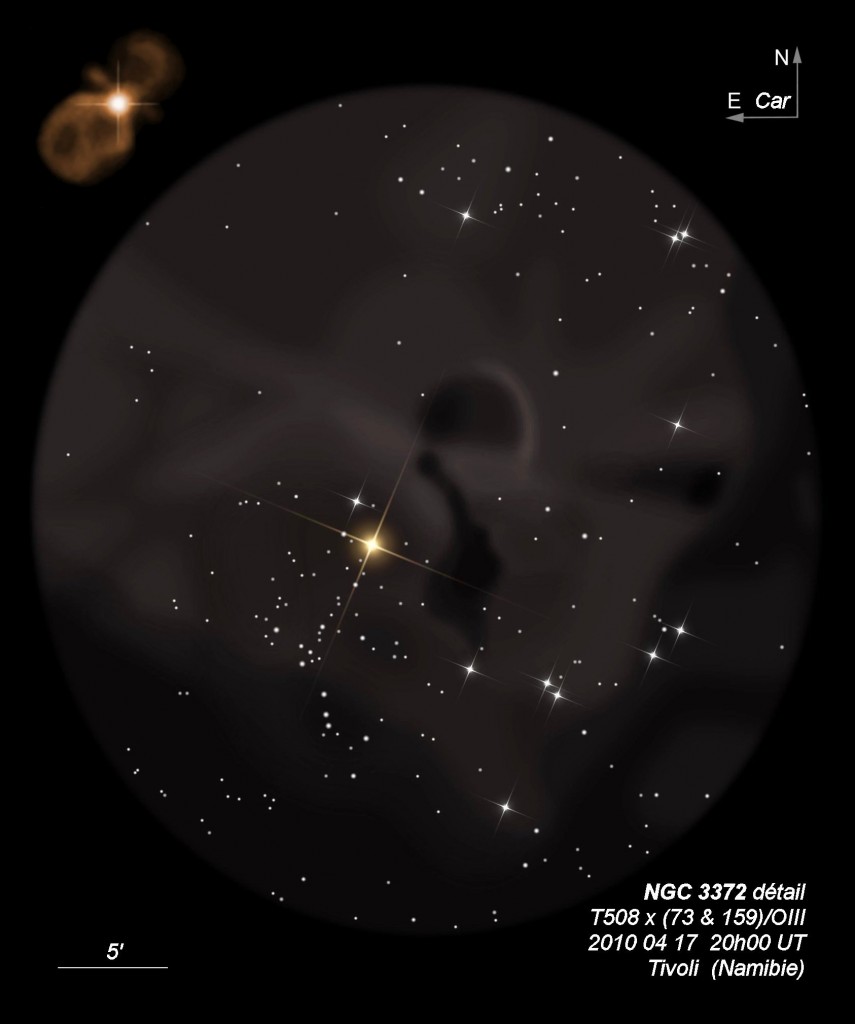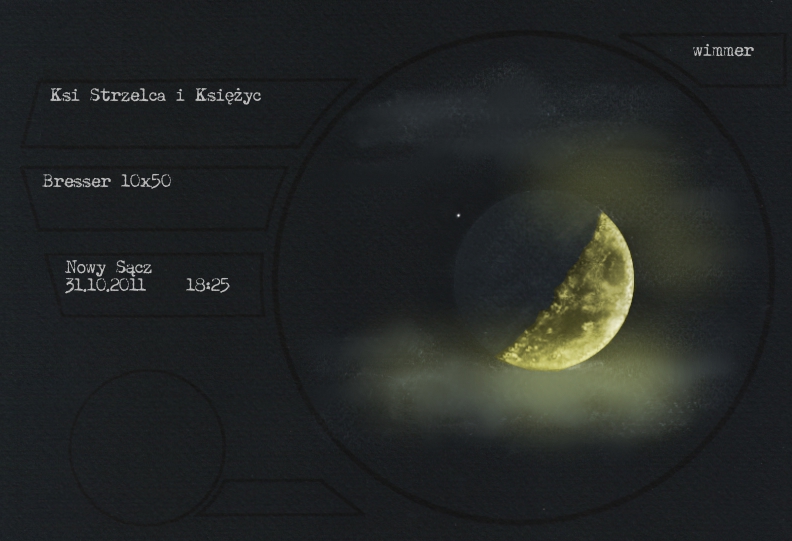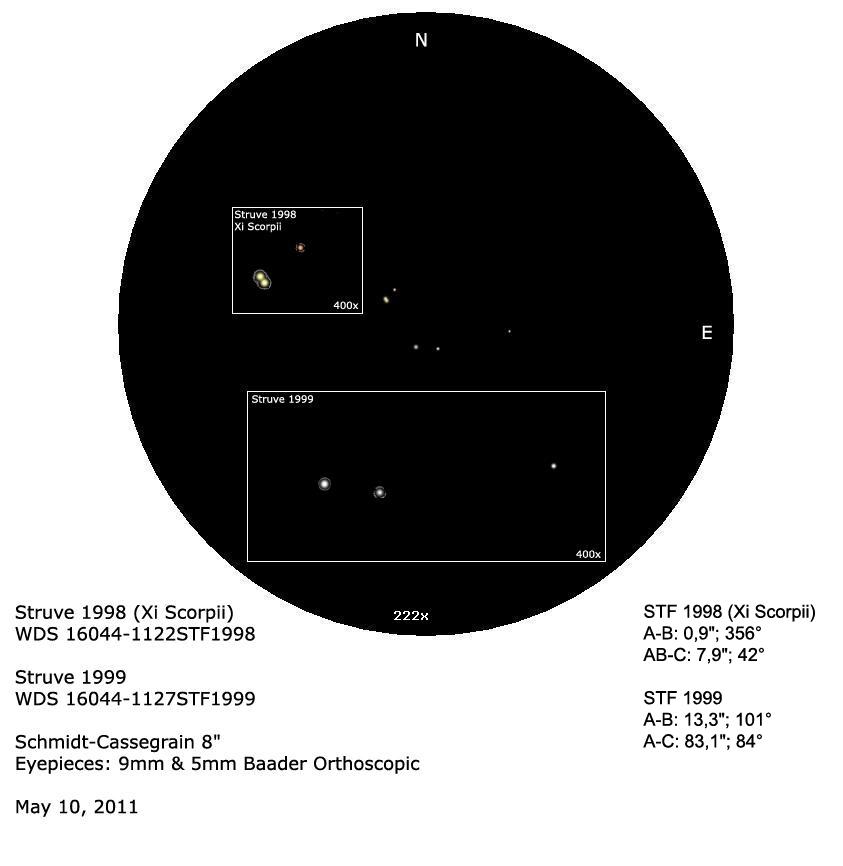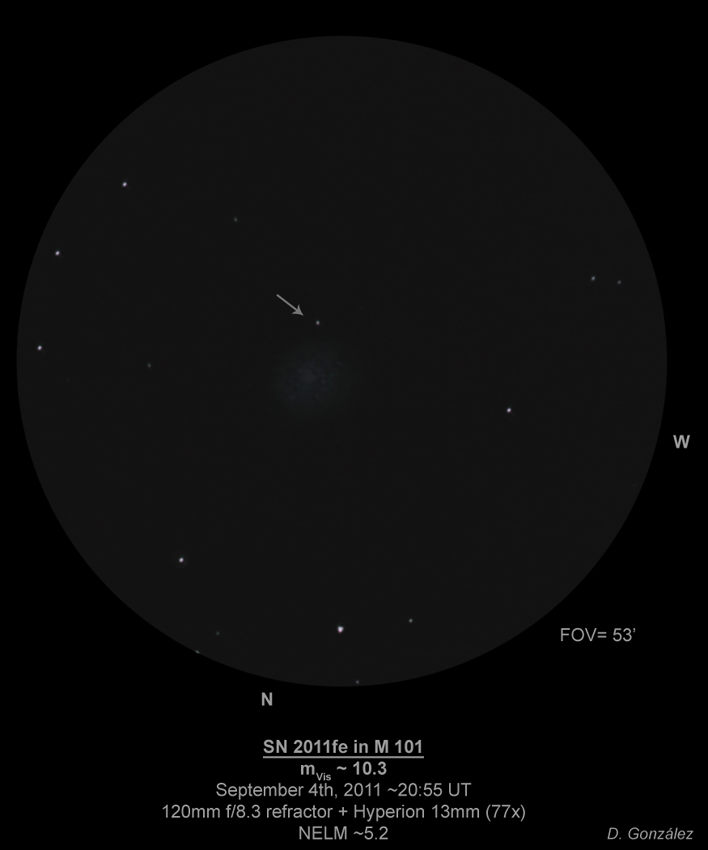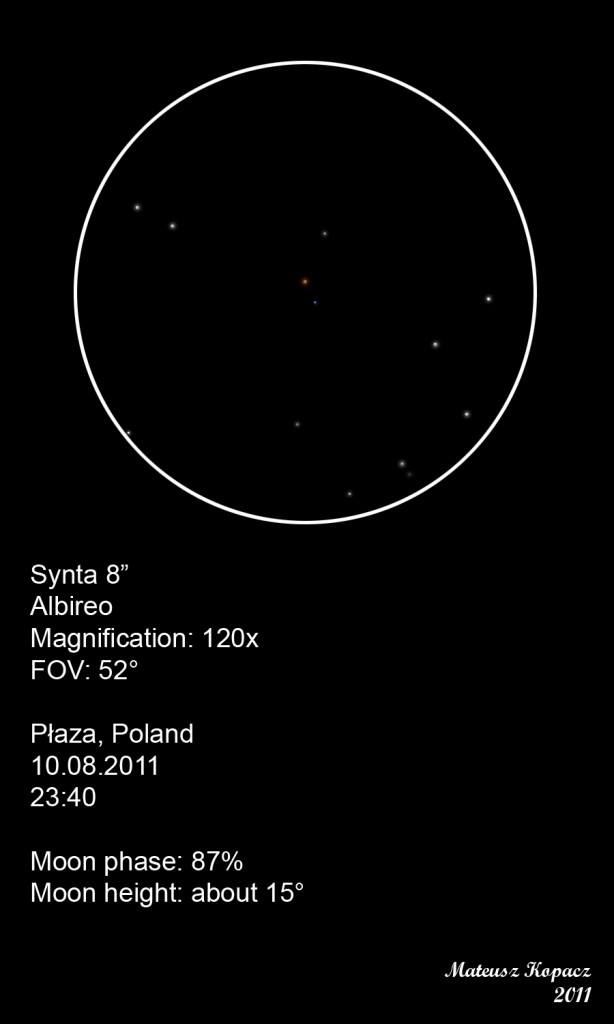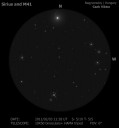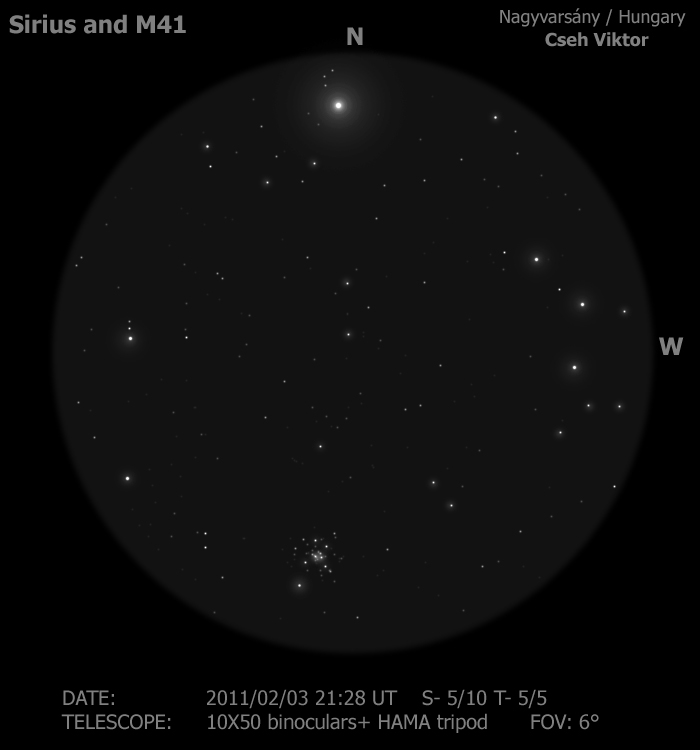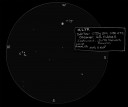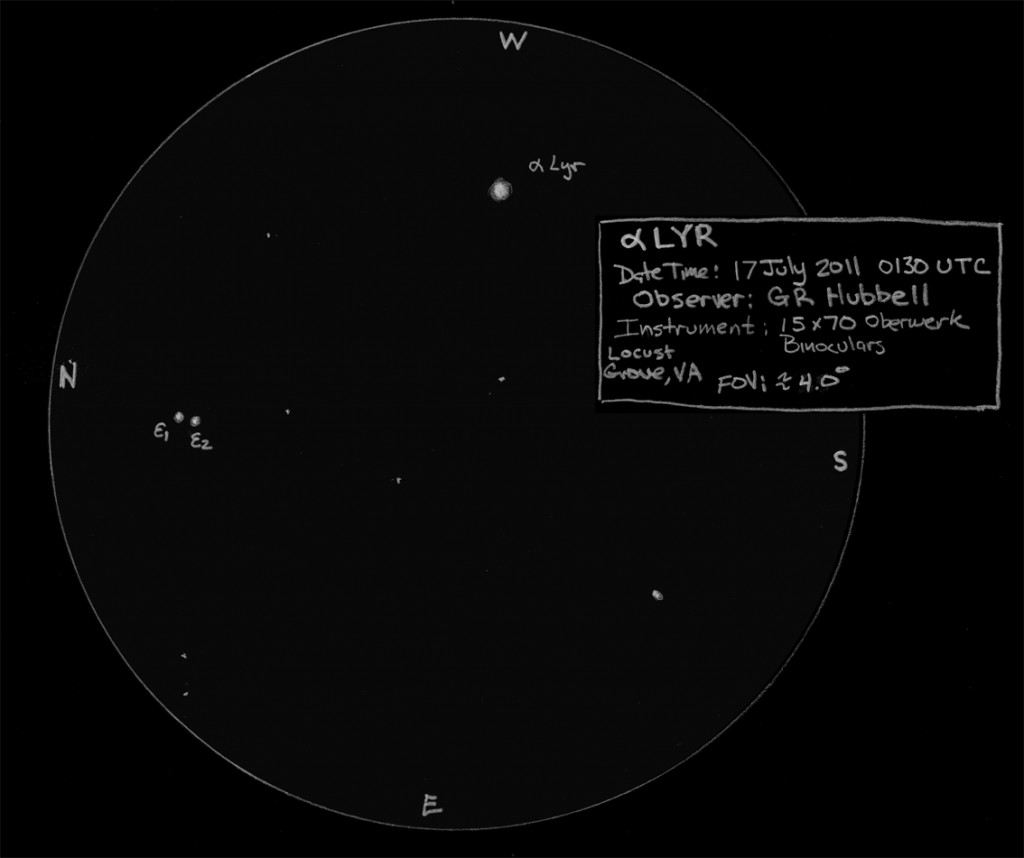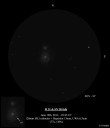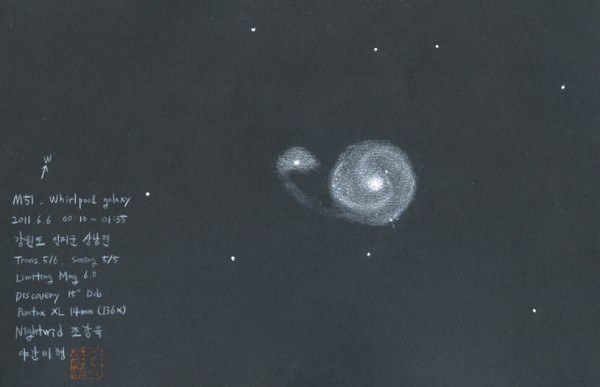
Object : Supernova SN2011dh in Spiral Galaxy M51
Date : June 08, 2011
Time : 12:30-02:00 LST/ 07:30-09:00 UT
Location : Aguila, Arizona USA
Gear : Binoculars 25 x 100 and CPC1100 XLT with 25mm Plossl
Detector : Visual Sketch
Magnitude : 8.5 for M51 and 14.9 for SN2011dh(webtreatz.com)
Weather : Clear sky, no winds, low 70’s and quiet as a mouse!
Comments :
It’s interesting to ponder in awe, how a star that has turned into a supernova some 30 million light years distant is just NOW reaching our immediate universe, our light buckets our dilated pupils! This recently discovered supernova cataloged SN2011dh and found on May 31, 2011, might not last long. It’s believed to be diminishing in magnitude with a possible viewing window of some weeks or perhaps a couple of months. If you would like to get a glimpse of it, my suggestion is- don’t wait any longer!
With mounted binoculars it is quite easy to pick up M51 as it appears elongated and fuzzy. Some fidgetting of the eyeball around the circumference of the oculars and it’s companion NGC5195 emerges just as well. Both gravitationally interacting galaxies seem like puffs of smoke with their nucleus showing a hint of brightness.There are no noticeable spiral arms, no connecting bridge or other discernable features- not even the main attraction SN2011dh.
All this will change when I prepare the 11 inch SCT and aim it at the said subject with a 25mm Plossl. Yes, I had tried a 10mm and a 32mm but the 25mm gave me the best results. Peering down the eyepiece, Hazy blotches but distinct spiral structures are emanating from the soft glowing core of M51. Of the two major spiraling limbs, the one stretching all the way to NGC5195 or the one with the southeast orientation, will be the one sporting the newly discovered supernova. Four tiny specks of starlight ranging in magnitude from 13 -15 located on the southwest side of the Whirlpool and lined-up from East to West are clearly visible when using the cone receptors within the corners of your eyeballs. Averted vision here my friends, or you will miss the whole point. No pun intended! From recent photo submissions to various popular social websites, I made a mental note to see the whereabouts or location of SN2011dh. It’ll be nested on the spiral arm which embraces NGC5195 or the one facing the southeast coordinates.Much better seeing than explaining but after plotting their correct places among the broken segments of spiral arcs- one of the specks surely did fell where the photos had indicated it should be! I concluded my quest and my sketching for the night was done. Enjoy!
Dark and clear skies to all,
Juanchin 😀
